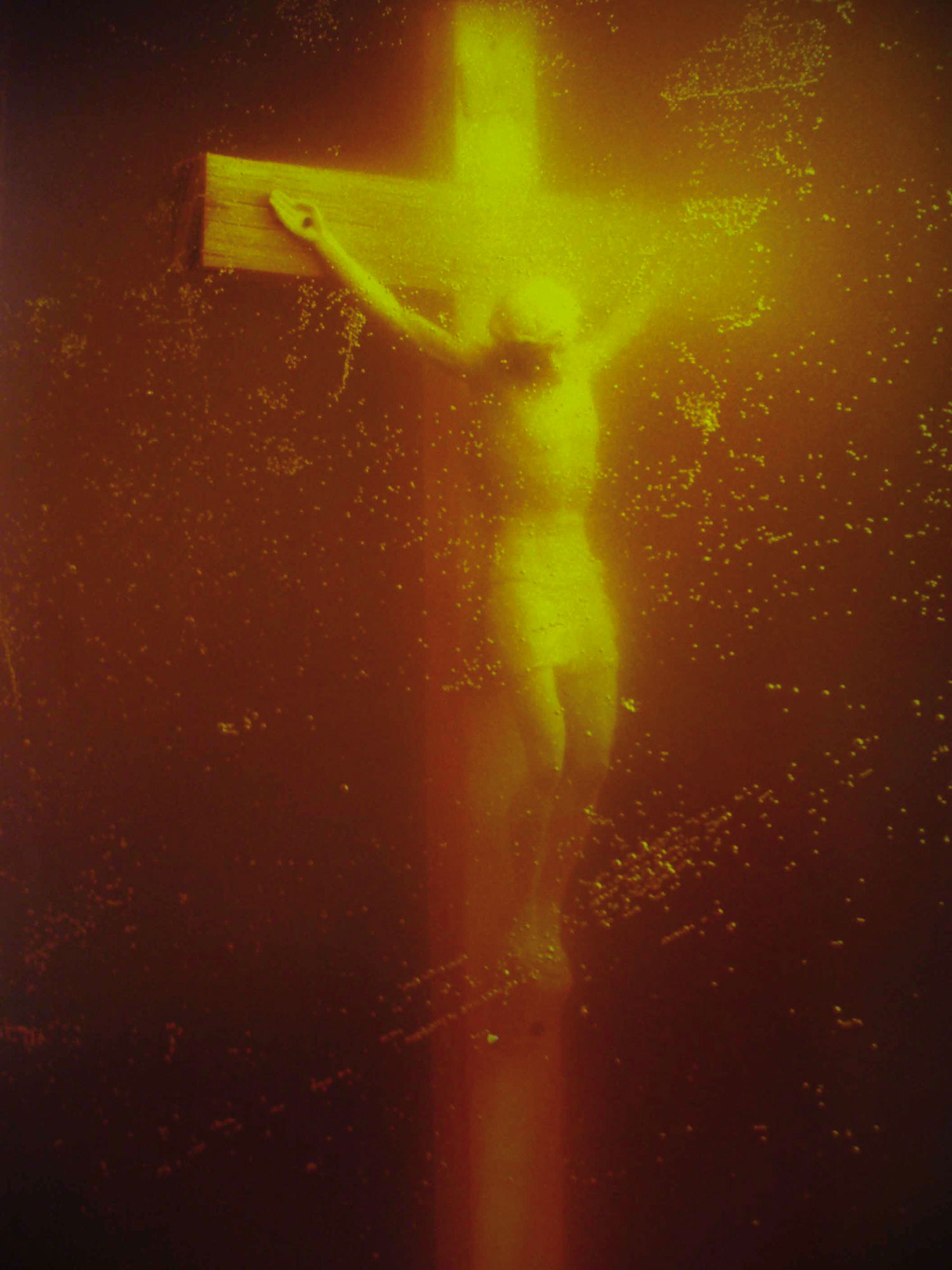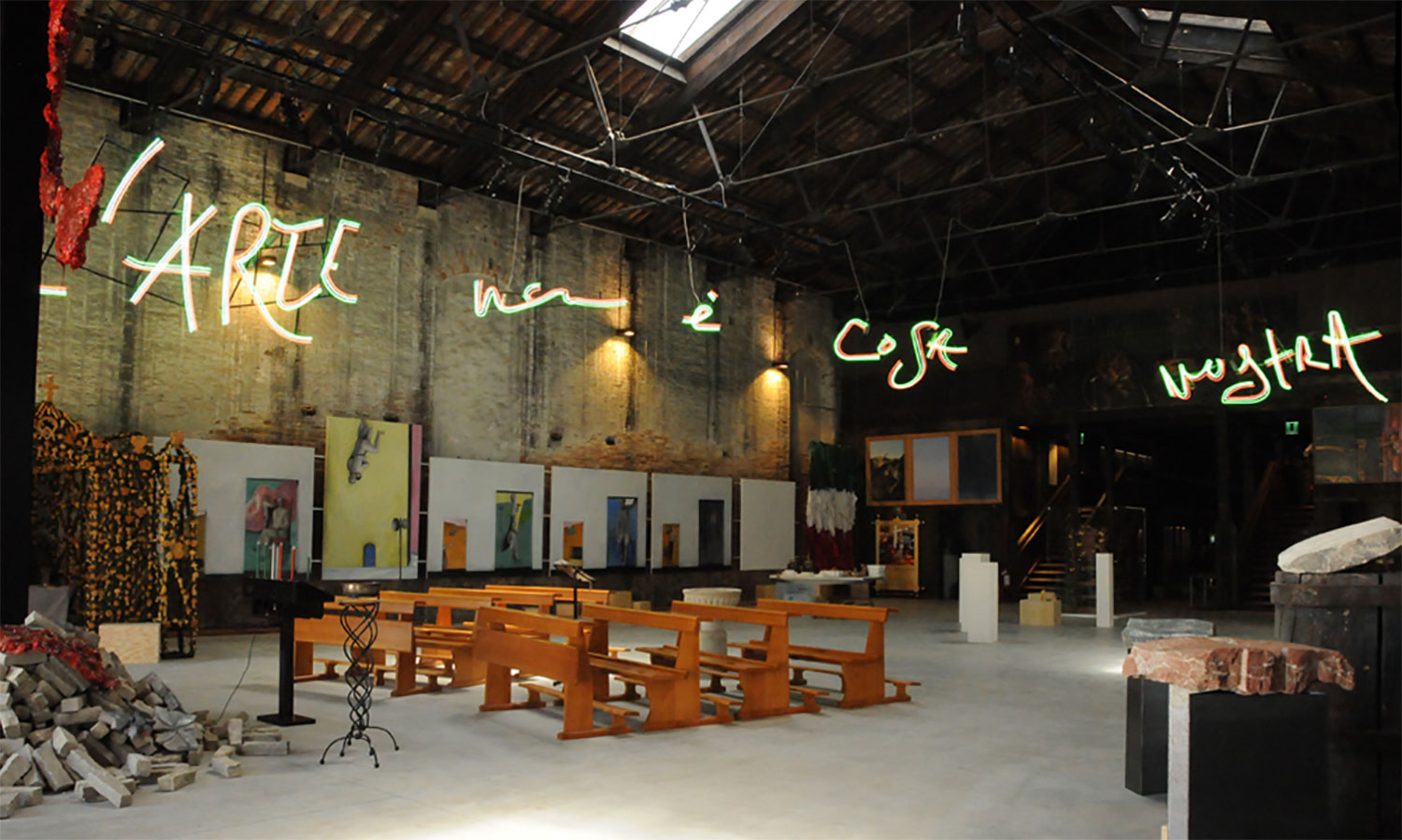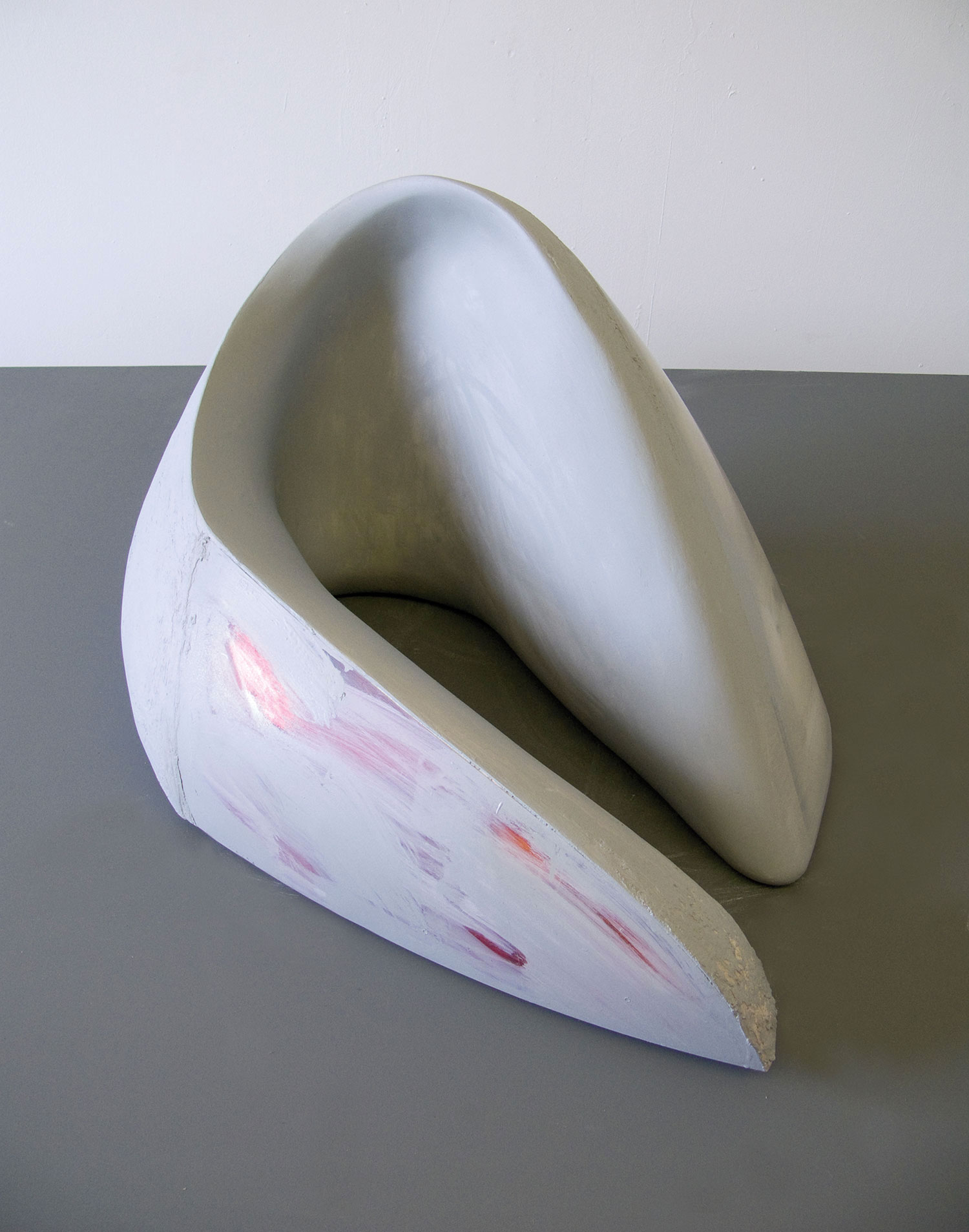
The waters in Piazza San Marco were rising the night of the official Venice Biennale opening, causing a mini flood for ladies on stiletto high heels and partygoers looking for shortcuts. But water, always a good metaphor for this sinking city, reached far beyond the picturesque square. It became an ongoing theme in this year’s Biennale, second only to politics and revolution in the Arab world.
Troubled waters were in evidence at the Greek Pavilion. Artist Diohandi created a minimalist world, blending interior and exterior, transforming the pavilion into a dark lake with nothing but a small bridge, a column of light and a single note to fill the air.
In “Wounded Water,” Iraq’s first pavilion since 1976, water is a source of life and a symbol of continuity, and one of the country’s primary environmental and political problems.
At the Arsenale, Ayşe Erkmen’s Plan B for the Turkish Pavilion, colorful pipes draw canal water through a purification process. The clean water is sent back to the source, thus creating a useless device (the initial idea to let people drink the water proved to be too complicated). The work’s magic lies in its ongoing and persistent attempt to achieve something unachievable. This beautiful and complicated machine makes no real difference in the world; its strength lies in its absurdity.
Big colorful pipes also pump water from beneath the Israeli Pavilion, where Sigalit Landau has dug into a secret room connected to Venice’s water system. The water coursing through a lattice of water meters, typical of those in Israeli streets, grows into an intense, always ticking, always measuring sculpture. It is another endless cycle, with water moving from one point to another without any real purpose but the ongoing flow. But this flow runs through the veins of Landau’s poetic world of water and salt.

Continuing her long-term study of the Dead Sea, the lowest point on Earth, Landau presents a fishing net that was left in the sea until it was covered with salt crystals and became a sculptural object. The Dead Sea is also the nexus of Landau’s dream to build a salt bridge between Israel and Jordan. Various voices debate part of the tong-term approval process via laptops on a round table. A little girl crawls underneath the speakers, tying their shoelaces together, forcing them to sit together until they find a solution, but also pointing with the shoes (presented when you exit the pavilion) to the circle of endless regional negotiations. Shoes, Landau’s own working boots, also appear on a main video screen: covered with salt crystals from the Dead Sea, the boots sit on a layer of ice in the frozen Gdańsk Lake in Poland. As the salt slowly melts the ice, the boots fall into the hole they create.
As Landau’s refugee boots sink on a frozen lake, Yael Bartana in the Polish Pavilion pursues a very different political dream. The Jewish Renaissance Movement in Poland (started as an artistic project) has taken a surprising twist since being chosen to represent Poland. The concept of the video trilogy is a call for Jewish people to return to Poland. This message has since broadened, and the movement, which is now open to anyone without a homeland or against the idea of nationality, focuses on the idea of political imagination. The question is: How can one change the future or influence history?
The Jewish people’s return to Poland (resonating with the Palestinian right of return) is only a case study. The beautifully designed pavilion now launches a movement with membership cards, posters, t-shirts and a cookbook for Political Imagination including essays next to recipes for those craving a taste of Israel in Poland.
In Zamach (assassination) (2011), the latest video of the trilogy premiered in Venice, we watch a memorial ceremony for the movement leader after his assassination. Different speakers represent differing attitudes toward the movement; the last speaker, Yaron London, a prominent Israeli journalist, is there to mourn and attack at the same time. It is all a naïve idea, he claims, one that has no foundation in reality.
But weren’t naïve ideas the driving force behind many of this year’s events? In the nearby Egyptian Pavilion, Ahmed Basiony reminds us that naïve ideas and those who believe them can move the world. Videos display documentation of Basiony’s project from last year, “30 Days of Running in the Place” (a storefront gallery performance), measured his body heat and displayed movement and energy on a visual diagram (bringing to mind the athlete also running in place nearby on a treadmill connected to an upside-down tank outside the U.S. Pavilion). As Basiony’s breath slowly fills the plastic suit he wears while running, the images change to videos from Cairo’s Tahrir Square where Basiony demonstrated and met his death. Basiony’s last words online called this time “our last chance to change the regime.” Copied onto the pavilion’s brick wall, mixing the real with the virtual, the words give the “naïve” credibility to enact change via art and politics.





